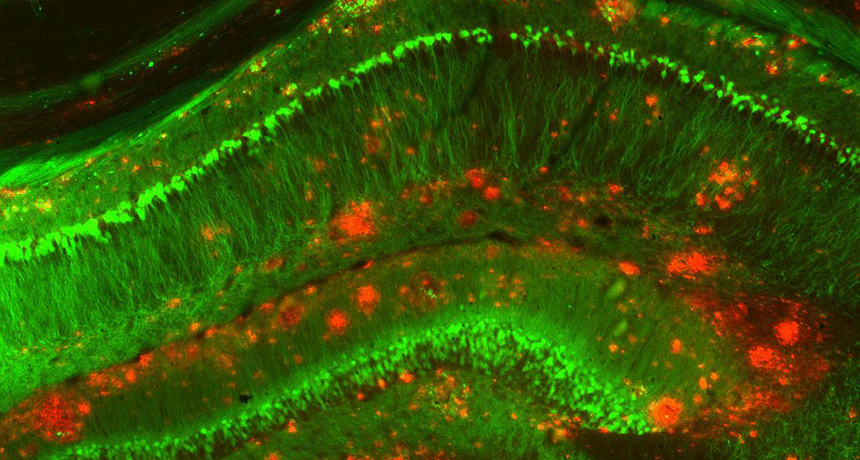
One hallmark of Alzheimer’s disease is clumps of a misbehaving protein in the brain.
But some of that protein might not have started in the brain. Experiments on mice now show that Alzheimer’s proteins can build up in the brain after sneaking in from the blood.Alzheimer’s is an incurable disease. It usually strikes in old age and causes symptoms such as confusion and memory loss. Researchers aren’t sure exactly what causes the brain disease. But they know that the brains of affected people have sticky protein clumps, called plaques (PLAKS). The protein that forms these clumps is known as amyloid-beta (A-beta).
The new results suggest A-beta that forms outside the brain may play some role to Alzheimer’s disease, says Mathias Jucker. He’s a neurobiologist at the University of Tübingen in Germany who did not take part in the tests. Treating a person’s brain is difficult. But this finding may help scientists develop new treatments that target easier-to-reach parts of the body — perhaps including the bloodstream.
Extreme blood sharing
To be sure, cells in the brain make A-beta. But blood platelets, skin cells, muscles and other body parts do too. These other sites make it in small amounts. Researchers wondered whether, over time, blood might carry A-beta from those other sites into the brain, where it could collect.
Earlier studies in animals showed that A-beta injected into the bloodstream can enter the brain. But scientists didn’t know whether enough of this A-beta gets to the brain to do damage.
To test this idea, an international team of researchers performed tests using a form of extreme blood sharing. They used six pairs of mice….
The post Alzheimer’s protein can sneak into the brain from the blood appeared first on FeedBox.